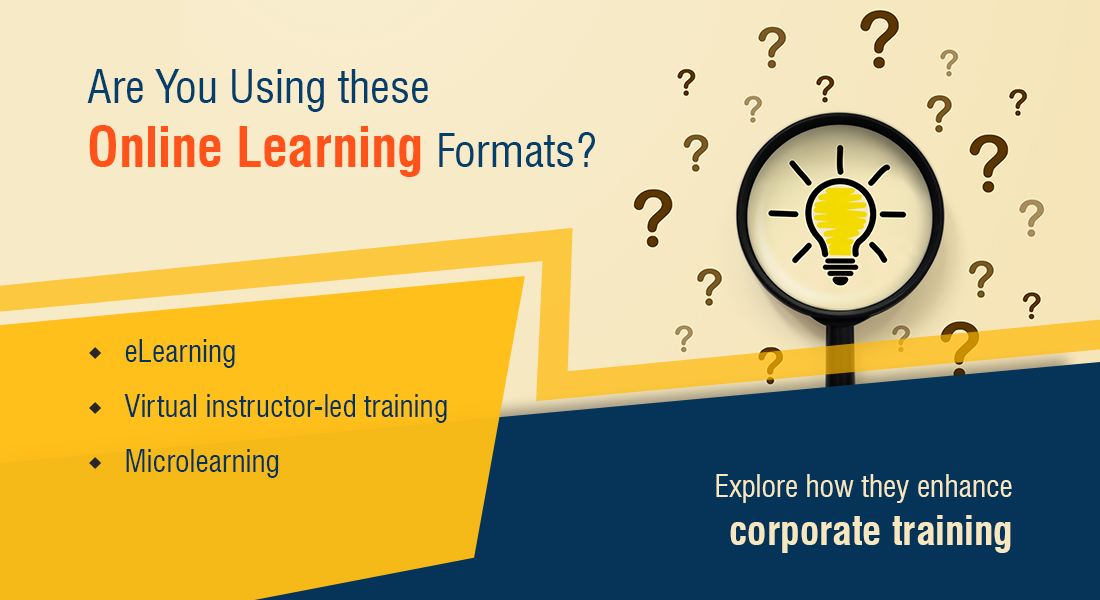Game-Based Learning: Why It Works and Why Implement It

Every game, be it a real-life sport or a video game, requires players to acquire a certain skill set to win or complete the game. Using this principle, we can take the concept of games and combine it with organizational subject matter to create a game that helps employees learn. Game-based learning can be defined as an approach that allows learners to play games to acquire necessary knowledge or skills.
→ Download Now: Instructional Design Strategies to Design Engaging eLearning Courses
Why is Game-based Learning Effective?
When training is dull, we are not engaged or motivated. In other words, we’re not really learning. Learning does not mean mere memorization; rather, it means acquiring the skills and thought processes needed to respond appropriately under pressure, in a variety of situations. To do this, employees don’t necessarily need more time in the classroom to learn how to think and perform in the face of real-world challenges. Instead, they need effective, interactive experiences that motivate and actively engage them in the learning process. This is where game-based learning comes in.
Game-based content draws users into a relatable virtual environment where learners work toward a goal, choosing their actions and experiencing the consequences of those actions along the way. It allows learners to make mistakes in a risk-free setting; and through experimentation, they actively learn and practice the right way to do things. This keeps learners highly engaged in practicing behaviors and thought processes that can be easily transferred from the simulated environment to real life.
In game-based environments, we learn not only the facts, but also the important, underlying hows and whys. This understanding of deeper, more abstract principles prepares us to perform consistently and effectively, even in new and unexpected situations. The best part is that employees get to do all of this while having fun.
This fun part plays a large role in increasing the reach of the eLearning program. The attention span of today’s millennial employees is very less thanks to the overwhelming information accessible to them through mobile devices. Game-based content can help overcome this by better engaging learners. Attractive graphics, immersive gameplay, and intuitive sound effects make games a complete package for engrossing learners’ attention.
You saw why game-based learning works so well; now it’s time to see the string of benefits it creates if implemented in your training program:
Increases Motivation
Games feel more like a form of entertainment than a method of learning. Due to its rules, definitive objectives, measurable goals and competition, it delivers an interactive experience that promotes a sense of achievement for all the participants. Using leaderboards, learners can track the progress of their peers and push themselves harder to cope up.

Instructional Design Strategies to Design Engaging eLearning Courses
Design Learner-Centric eLearning
- Importance of ID Strategies in eLearning
- Parameters to Select the Right ID Strategy
- ID Strategies for Effective Results
- Case Studies
Offers Instant Feedback
Games have the distinct advantage of giving immediate feedback to its players. If you don’t do well, you die, lose your health, energy, or any powers (all in the virtual world of course). This greatly helps the decision-making ability of the learner as they know the consequences of a wrong one. Any errors committed during the first attempt can be rectified in the second try, showing users both sides of the picture. Even learning managers benefit from this instant feedback as they get valuable data about learner behavior and course proficiency.
Stimulates Problem Solving
Most games require employees to think quickly. Moreover, they need to utilize their logic to plan their future steps to solve problems and complete levels. This free reign of thought facilitates independent action and allows learners to devise their own take on the situation. When faced with a game-based scenario in the real-world, learners display greater efficiency to resolve or tackle it.
Helps Build Skills
Games can target specific skill sets. All aspects of the game are specially designed keeping in mind the actual work that your employees are going to do in the real world. As learners work these gaming aspects repeatedly throughout the course, their practical skills are honed along the path. The knowledge and skills acquired through game-based learning are retained longer than information from other learning methods.
Game based content is the learning material of tomorrow. Organizations are increasingly realizing its potential for impactful training. Are you ready to join them?





